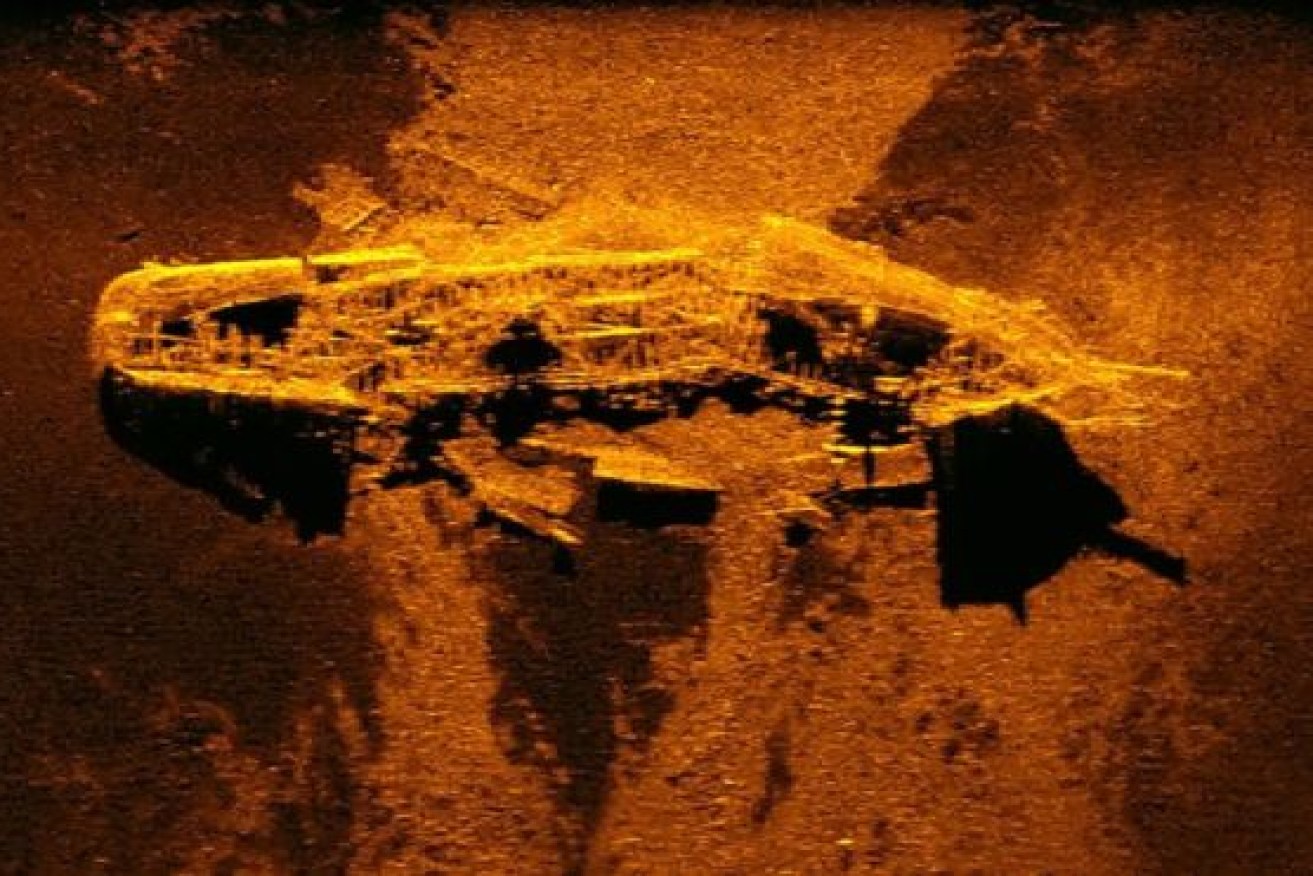“If it was a shipwreck that we could dive on … we’d be looking for any artefacts like ceramics or bottles or anything that could confirm providence,” Dr Anderson added.
Search for MH370 uncovers 19th century British shipwrecks in Western Australia


One of the wreck sites that were discovered during the search for Flight MH370. Photo: Australian Transport Safety Bureau
Shipwrecks found during the failed search for the missing MH370 flight are 19th century British coal-carrying vessels, researchers say.
The two ships were discovered 2300km off the coast of Western Australia during a trawl of the Indian Ocean in 2015.
The location of the Malaysia Airlines flight remains unknown after it disappeared on March 8, 2014 en route from Kuala Lumpur to Beijing carrying 239 people.
Using sonar images and shipping records, researchers have narrowed down the two shipwrecks, found 35km from one another, to a handful of vessels, the Telegraph is reporting.

The Australian, Malaysian and Chinese governments have given up the search for MH370. Photo: AP
Dr Ross Anderson, curator of maritime archaeology from the Western Australian Museum, said the closest match to one wreck – found in December 2015 – was West Ridge which vanished in 1883.
The 67-metre iron barque, built in Scotland, and its crew of 28 disappeared while transporting coal from England to India.
Dr Anderson said the vessel was found relatively intact and upright on the sea bed, about 4km below water level.
Sifting through debris including a coal sample and surviving anchors enabled researchers to identify West Ridge, built in Glasgow in 1869, as the likeliest candidate.
The second vessel, found in May 2015, has been narrowed down to two ships.

One of the wreck sites that were discovered during the search for Flight MH370. Photo: Australian Transport Safety Bureau
Dr Anderson said two possibilities were the W. Gordon, which had been heading from Scotland to Australia in 1877, or the Magdala, which was lost in 1882 en route from Wales to Indonesia.
“Most of the material widely scattered on the seabed consists of the remains of the coal cargo that had spilt out of the hull prior to it striking the seabed,” Dr Anderson said.
“The evidence points to the ship sinking as a result of a catastrophic event such as explosion, which was common in the transport of coal cargoes.”
More research will need to be done before researchers can be certain of the identity of the wrecks.
“These are the deepest wrecks so far located in the Indian Ocean, they’re some of the most remote shipwrecks in the world, so we try to maximise any information.”
The search for MH370, a joint mission between China, Australia and Malaysia, ended in January 2016 after 1046 days.
A private US company in January struck a deal with the Malaysian government and agreed to continue searching for the wreckage.
It’s understood that search is now in its final weeks.
Malaysian Transport Minister Liow Tiong Lai in January said the country has an “unwavering commitment to solving the mystery of MH370”.
The fate of the plane remains shrouded in mystery. A few hours into the flight the plane stopped sending communications but tracking data suggests MH370 crashed in the Indian Ocean, south-west of Australia.
The enormous operation cost $200 million and covered a search area of 120,000 square kilometres.








